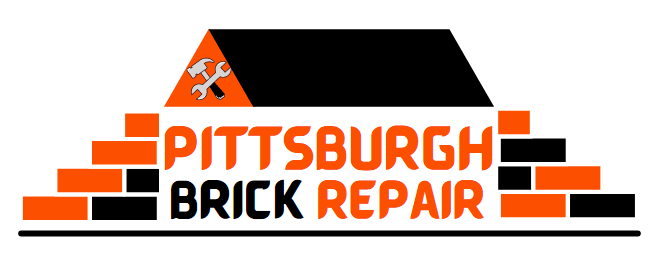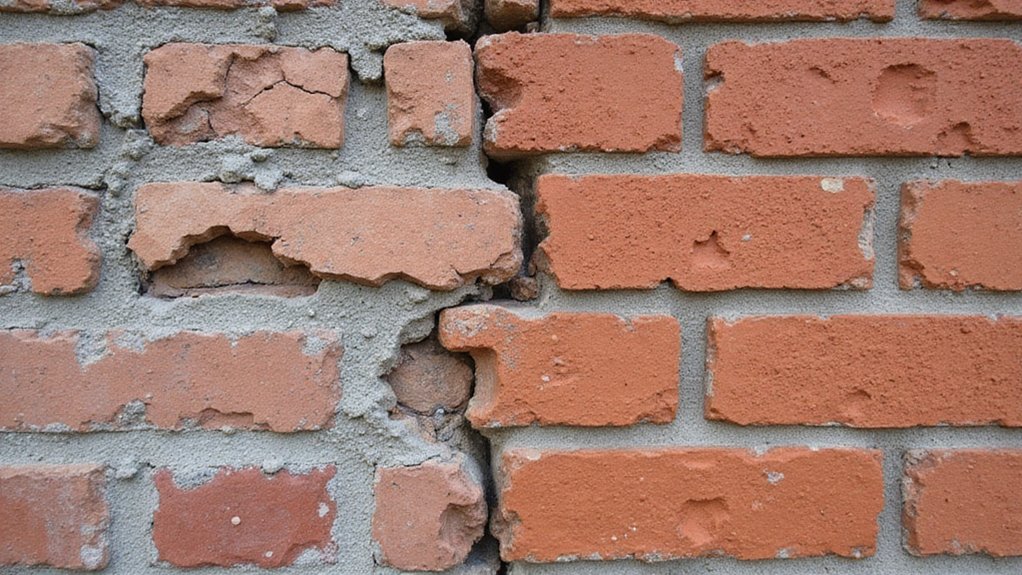When you notice cracks or crumbling in your brick walls, you’re likely wondering whether to repair or replace them. It’s a common dilemma that can feel overwhelming, but understanding the signs and options can help you make a smart decision. Your home’s structural integrity and appearance are at stake, and the right choice depends on several critical factors. Want to know which path might save you time, money, and future headaches?
Assessing Brick Damage: A Comprehensive Overview
When bricks start showing signs of wear, it’s crucial to understand the extent and nature of the damage. Your brick condition evaluation begins with a thorough visual inspection, where you’ll identify key deterioration pattern analysis indicators. Tuckpointing techniques can help address minor mortar joint issues before they escalate into more significant structural problems. Look for cracks, spalling, efflorescence, and mortar joint degradation that might signal deeper structural issues. You’ll want to carefully assess whether surface-level damage suggests minor repairs or more extensive replacement needs. Comprehending these intricate signs helps you make informed decisions about maintaining your brick structures, potentially saving you significant time and money in the long run.
Signs That Indicate Repair or Replacement Is Necessary
After carefully examining your brick’s condition, you’ll want to recognize specific signs that signal whether repair or replacement is truly necessary. Brick deterioration patterns like extensive cracking, significant mortar erosion, or large chunks missing indicate potential underlying structural issues. You’ll notice when bricks become severely weathered or show signs of water damage. Exposure to weather elements can cause progressive damage that compromises your building’s structural integrity over time. If you’re seeing widespread shifting, bulging walls, or persistent moisture penetration, these are serious red flags. Your home’s structural integrity might be at risk, so it’s essential to consult a professional who can assess the damage and recommend the most appropriate solution for your specific situation.
Cost Considerations: Budgeting for Brick Restoration
Most homeowners find brick restoration costs can quickly become a significant investment, ranging from a few hundred to several thousand dollars depending on the project’s scope.
You’ll want to investigate cost-effective solutions that fit your budget while addressing structural needs. Consider financing options like home improvement loans or credit lines to spread out expenses.
Prioritize essential repairs and get multiple quotes from reputable contractors to understand potential costs. Understanding your specific brick damage will help you make a financially smart decision that protects your home’s integrity and appearance without breaking the bank.
Structural Integrity: When Replacement Becomes Essential
Certain warning signs indicate your brick structure has moved beyond simple repair and requires full replacement to maintain its structural integrity. Critical structural defects compromise load bearing capacity, signaling it’s time to replace, not patch.
You’ll want to watch for extensive cracking, significant wall leaning, or foundational shifts that weaken your building’s core strength. These aren’t cosmetic issues—they’re serious structural problems threatening your property’s stability.
When professional inspections reveal deep, systemic damage, replacement becomes your safest, most cost-effective solution. Don’t risk further deterioration by attempting temporary fixes.
DIY vs. Professional Brick Repair Techniques
How do you decide between taking on brick repair yourself or calling in the professionals? DIY techniques can save money, but they require specific skills and tools. If you’re handy and the damage is minor, you might tackle small repairs like replacing a few bricks or filling cracks.
However, complex structural issues demand expert consultation. Professional masons understand load-bearing requirements and can guarantee long-lasting results. They’ll assess the root cause, recommend the best solution, and provide warranties. While DIY can be tempting, sometimes investing in professional competence prevents costlier repairs down the road.
Matching Materials and Preserving Aesthetic Appeal
When replacing damaged bricks, matching the original materials becomes crucial for sustaining your structure’s visual integrity and historical character. Color matching isn’t just about aesthetics; it’s about preserving the unique story of your building.
Professional masons meticulously select bricks with similar texture, color, and composition to guarantee seamless integration. Historical preservation demands attention to detail, whether you’re working on a century-old home or a vintage commercial building.
Long-Term Maintenance Strategies for Brick Surfaces
Because brick surfaces require consistent care to maintain their structural integrity and aesthetic value, developing a detailed long-term maintenance strategy is essential for homeowners and property managers.
Your brick surface cleaning routine should include annual inspections, gentle pressure washing, and prompt repair of small cracks or damaged mortar. Structural reinforcement techniques like repointing and applying weatherproof sealants can substantially extend your brick’s lifespan. You’ll want to address minor issues quickly to prevent costly extensive repairs.
Regular maintenance not only preserves your property’s appearance but also protects your investment, ensuring your brick surfaces remain strong and beautiful for years to come.
Key Factors in Making Your Brick Repair Decision
After investing time and effort in maintaining your brick surfaces, you’ll inevitably face decisions about repair or replacement.
Your brick condition evaluation requires careful analysis of deterioration causes, including moisture damage, structural stress, and age-related wear. When evaluating your brick’s health, look for key indicators like deep cracking, widespread erosion, or significant structural compromise.
You’ll want to weigh repair costs against full replacement expenses, considering factors like the extent of damage, building age, and long-term structural integrity. Professional consultation can help you make an informed, confident decision that protects your property’s value and appearance.
Frequently Asked Questions
Can Water Damage Be Fixed Without Completely Replacing Brick Walls?
You can often repair water damage using moisture mitigation techniques and brick repointing methods, saving your wall without complete replacement and preserving its structural integrity and aesthetic appeal.
How Long Do Professionally Repaired Bricks Typically Last?
With professional knowledge and high repair quality, your brick repairs can last 10-25 years. You’ll enjoy lasting structural integrity when skilled masons handle the restoration precisely and carefully.
Will Minor Brick Cracks Compromise My Home’s Overall Structural Integrity?
Minor brick cracks won’t necessarily threaten your home’s stability, but they can raise aesthetic considerations. You’ll want to monitor them closely, as small issues might indicate underlying structural concerns that deserve professional assessment.
Does Homeowners Insurance Cover Brick Repair or Replacement Costs?
You’ll need to review your insurance policy coverage carefully, as most standard homeowners policies cover brick damage if it’s sudden and accidental. Filing an insurance claim process depends on the specific cause of damage.
Are Historic Brick Buildings More Challenging to Restore Than Modern Structures?
Historic brick buildings demand specialized [knowledge] in preservation. You’ll need skilled craftspeople who understand sustainable brick renovation techniques to maintain your building’s cultural significance and [design] integrity.

